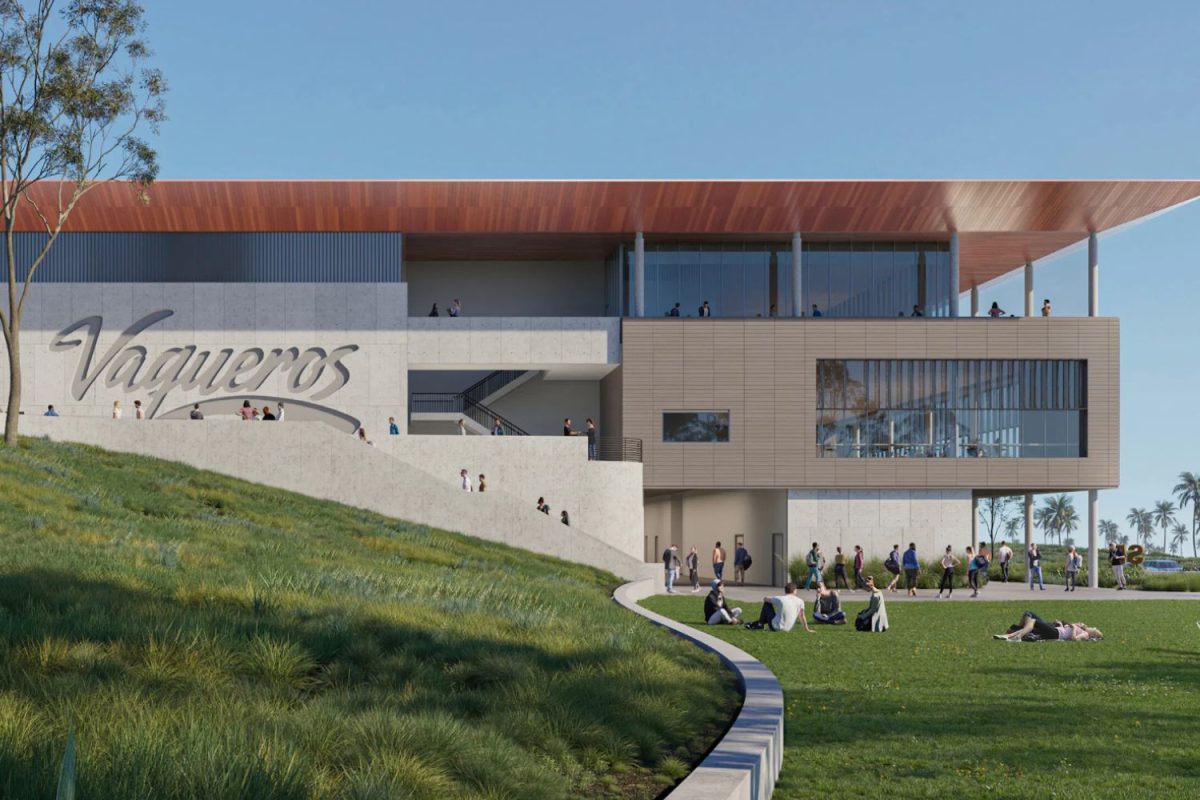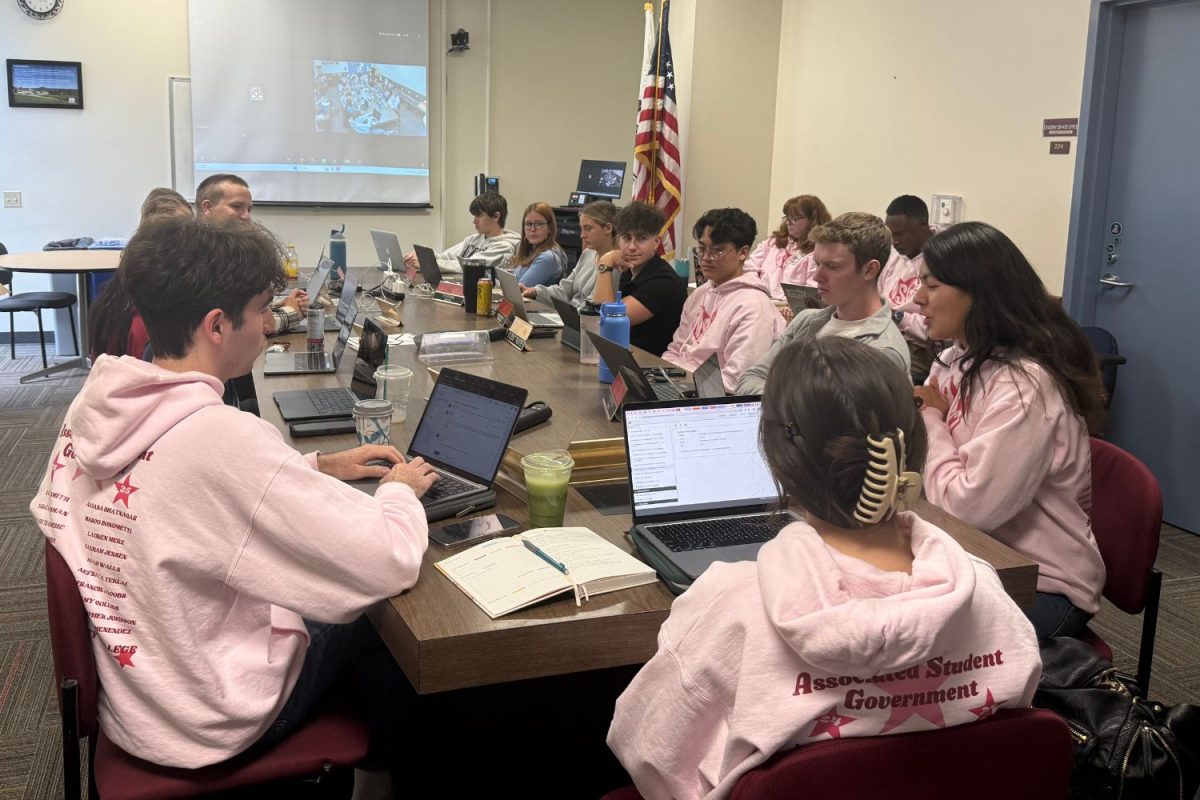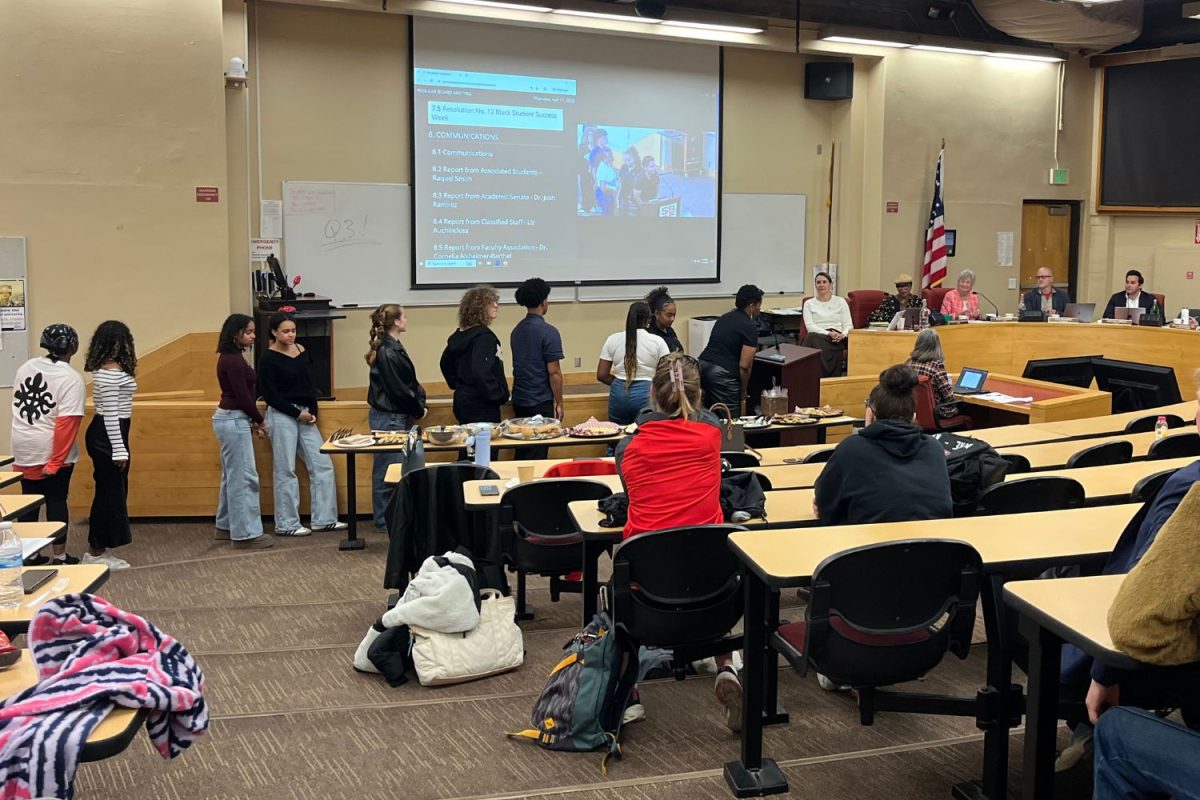Two City College professors used demos involving make-shift rockets, an upside-down swinging cup of water, and controlled explosions to explain the possibilities of space travel and colonization Wednesday, Nov. 7, in the Fe Bland Forum.
The technical yet comprehensible lectures given by physics professor Dr. Mike Young and astronomy professor Dr. Sean Kelly explored the methods by which humankind could get to space, how long it would take, how much it would cost, and what it would take to make Mars habitable.
Kelly emphasized the impact space travel will have on the future of the human race.
“The planet is getting a little crowded,” Kelly joked. “We’re running out of space. We’re thinking about the future.”
“We are just beginning,” he continued. “We’re children. We’re part of a society that’s just beginning. Just stop for a moment and think about what’s gonna happen in your life. You may not realize it, but you’re are about to see the beginning of the biggest industry that has ever existed on Earth.”
Kelly said while no individual could take on the cost of making space travel happen, it is possible that a country like the United States could incur the cost. He added that private companies like SpaceX, founded by famed entrepreneur Elon Musk, have entirely changed the economics of space travel for the better, by reducing outsourcing.
“Elon Musk, he’s really putting it on the line. He’s not afraid of failure, and you shouldn’t be either, by the way, because failure means you’re actually trying things that are on the edge. And maybe you can’t do it this time, but if you try enough, you are going to succeed.”
Kelly also discussed the effects of centrifugal force, or artificial gravity. He explained how the rotation of space stations, is what provides artificial gravity in space- something that is necessary for safe space travel.
“When we see anything moving in a circle, we know there has to be a force associated with it.”
To demonstrate the function of artificial gravity, he swung a cup full of water rested on a plastic plate attached to strings in circles high over his head. As intended, none of the water spilled, even though it was swinging in large circles.
Kelly also explained why Mars is currently uninhabitable, and what would need to happen to enable humans to colonize the planet. He said the lack of a magnetic field from Mars’ core have enabled solar winds to destroy the atmosphere, which is why there is no water on Mars.
“A magnetic field around a planet is like a forcefield that prevents the solar wind and the charged particles coming from solar wind by penetrated by it […] The solar wind actually blew away Mars’ atmosphere.”
Kelly said scientists are exploring ways to restore Mars’ atmosphere.
“We need to create a magnetic field,” he said. He said by moderately increasing the temperature of Mars’ atmosphere, carbon dioxide in the atmosphere would form a greenhouse, and melt the ice left on Mars.
“Instead of trying to restart Mars’ magnetic field, which is impossible, we make a magnetic field between Mars and the sun.”
Young’s lecture complemented Kelly’s, as it focused deeply on the means of space travel, particularly how it would concern energy and time.
He used his makeshift rocket, which he rode across the stage of the forum, to show how rockets are propelled forward. He showed his calculations of just how much fuel would be needed to take a rocket to the nearest star.
He determined that it took six and a half million pounds of fuel to get to the moon. He then found that it would require trillions of pounds of fuel to get to the nearest star, Proxima Centauri.
“Maybe we should start looking at other options,” he said with a laugh.
He proposed solar energy as a possible option. He said the sunlight actually has a little bit of momentum, and with a large enough way to collect the energy, like a giant mirror.
To show how much energy there is hydrogen, he filled a balloon with it and held a match to it. The balloon made a large popping sound as it exploded, giving the audience a small fireworks display.
He ended with a complex discussion of how the concept of time is not actually constant, and that the flow of time can be adjusted, which would greatly affect the measurement of how long it would take for humans to reach Proxima Centauri.
“It’s not for me to call how the world works. Its for me to discover it,” Young said, quoting Albert Einstein.
The lecture was hosted by the Economic Club, the Open Mind Project, and the Associated Student Government. The free event was part of the SBCC Faculty Colloquium 2017 Series.







